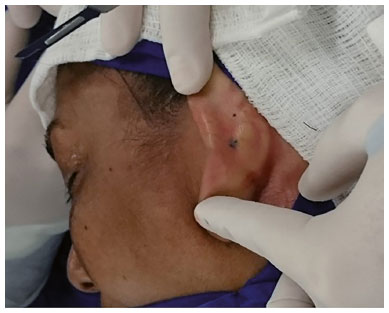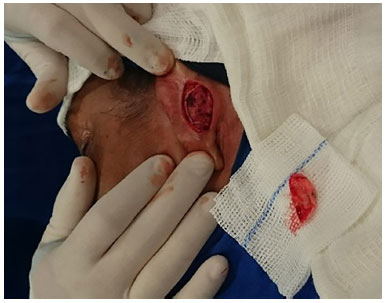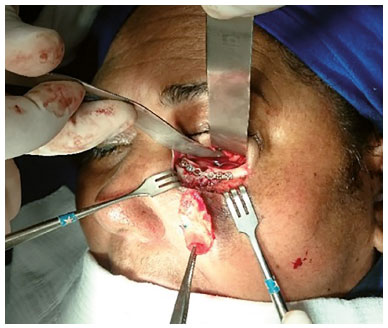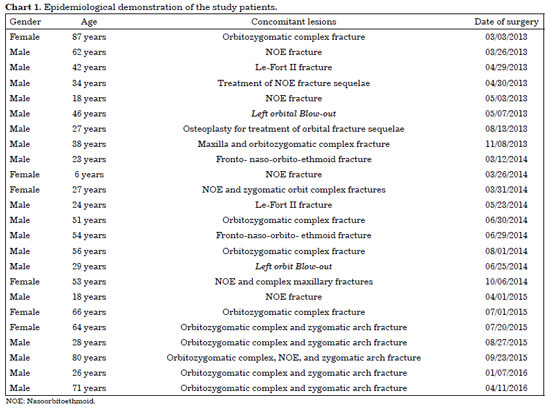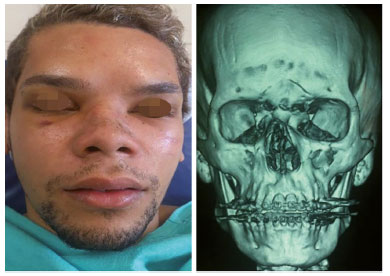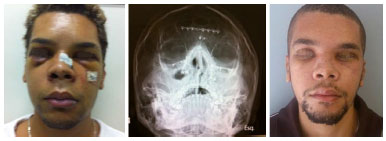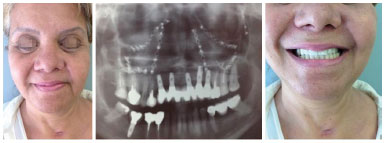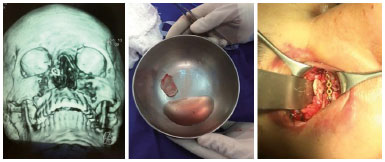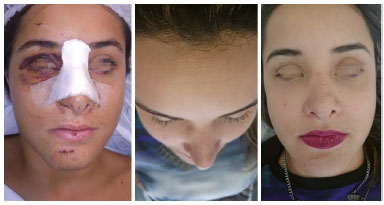ABSTRACT
INTRODUCTION: The reconstruction of defects in the orbital floor after fractures poses a challenge to the plastic surgeon because besides the patient's aesthetic and reconstructive expectations, possible functional complications such as diplopia and facial paresthesia must be treated. This study aimed at reporting a series of cases in which conchal auricular cartilage was used for volumetric orbital and structural replacement of the floor.
METHODS: Twenty-four patients, with surgery performed by the author, between 2013 and 2016, for pure (blow-out) or impure (conjugated to orbital margin injuries, such as zygoma and maxilla) orbital floor fractures, were evaluated. The repair technique involved autologous conchal cartilage graft in all cases. Patients were classified for the presence of preoperative complaints, including paresthesia and diplopia, and symptoms such as enophthalmia, as well as postoperative outcomes.
RESULTS: The existence of concomitant lesions, such as zygomatic complex and maxillary fracture, as well as fractures with greater discontinuity in the orbital floor, may influence the success of reconstruction. Few patients exhibited postoperative complaints and only two (9.2%) required a new surgical approach.
CONCLUSION: Autologous conchal auricular cartilage is a suitable material for reconstruction of defects in the post-fracture orbital floor, possessing various advantages, including ease of attainment, low morbidity, inconspicuous scar, and excellent adaptation to the shape of the orbital floor and consequent volumetric replacement.
Keywords: Orbit; Orbital fractures; Orbital implants.


